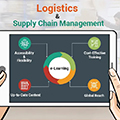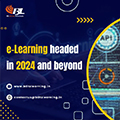
Blog
- Home
- Blog

21Mar
Metrics That Matter: Measuring the Impact of AR/VR in Corporate Training Programs
Introduction
The adoption of Augmented Reality (AR) and Virtual Reality (VR) in corporate training is transforming how organizations upskill their workforce. These immersive technologies provide hands-on learning experiences, bridging the gap between theoretical knowledge and practical application. However, their success hinges on measurable outcomes that demonstrate value and ROI. Identifying the right metrics to assess their impact is essential to ensure these technologies contribute effectively to corporate learning goals.
Engagement and Learner Satisfaction
One of the most critical indicators of AR/VR’s impact is engagement. Unlike traditional training methods, AR/VR offers dynamic and interactive environments that capture learners’ attention. Metrics such as time spent in the virtual environment, completion rates, and post-training feedback can provide insights into the learners' experience. A high engagement score typically translates to improved retention and understanding of complex concepts, reflecting the immersive nature of these tools.
Knowledge Retention and Skill Application
The primary goal of any training program is to ensure knowledge retention and application. AR/VR excels at this by allowing learners to practice scenarios repeatedly without real-world risks. Organizations can measure retention through assessments conducted immediately after training and follow-up evaluations weeks later. Metrics like accuracy rates in task simulations and the ability to recall critical information during real-life applications highlight the practical benefits of AR/VR in bridging the knowledge-to-action gap.
Cost Efficiency and ROI
While AR/VR implementations may have significant upfront costs, their long-term savings can be substantial. Metrics such as cost per trainee, reduction in travel expenses, and savings on physical training equipment can be analysed to assess cost efficiency. Additionally, calculating ROI involves comparing these savings to the increased productivity, reduced error rates, and shorter learning curves achieved through AR/VR. By quantifying these aspects, organizations can make informed decisions about scaling or modifying their AR/VR training programs.
Safety and Risk Reduction
For industries like construction, manufacturing, and healthcare, safety is a top priority. AR/VR enables trainees to experience hazardous scenarios in a controlled environment, reducing the likelihood of accidents during on-the-job training. Metrics such as incident reduction rates, compliance with safety protocols, and improvements in risk management practices post-training are critical indicators of AR/VR’s effectiveness in promoting a safer workplace.
Scalability and Accessibility
Another key metric is the scalability and accessibility of AR/VR training programs. Organizations must evaluate the number of employees trained over time and across geographies. Metrics such as the ratio of trainers to trainees and the adaptability of the AR/VR content to diverse learning needs demonstrate the technology’s ability to cater to a global workforce. Accessibility measures, including multilingual support and device compatibility, also contribute to the program's overall success.
Learner Progress and Behavioural Change
AR/VR training not only imparts skills but also influences behavioural changes. Tracking learner progress over time can highlight improvements in specific competencies. Metrics such as behavior-based performance evaluations and changes in employee confidence levels after completing training sessions provide insights into how effectively AR/VR installs desired workplace behaviours.
Conclusion
AR/VR in corporate training programs offers unparalleled opportunities to transform the learning experience. However, its true value lies in measurable outcomes that align with organizational goals. By tracking metrics such as engagement, knowledge retention, cost efficiency, safety improvements, scalability, and behavioural changes, businesses can ensure their AR/VR training initiatives deliver tangible results. As these technologies continue to evolve, the ability to quantify their impact will remain a cornerstone of their adoption and success in the corporate training landscape.

Neha Khare
About authorNeha Khare specializes in designing engaging and effective learning experiences tailored to learners' needs and also creates insightful blogs on corporate e-learning. She develops creative instructional methods, integrates multimedia, and aligns content with learning goals. Neha's innovative techniques and blog contributions significantly enhance the quality and impact of corporate training programs.



Leave a comments